A very late photo of O&W passenger service, at Teaneck, NJ. An F3, a steam heater car made from a Class X "Bull Moose" tender, a baggage express car and a single passenger car.

A very late photo of O&W passenger service, at Teaneck, NJ. An F3, a steam heater car made from a Class X "Bull Moose" tender, a baggage express car and a single passenger car.

The class leader of the Toledo, Peoria & Western's six H-10 Northerns. Described by Don Ball Jr. as "the most camera-shy Northerns built", they were also the lightest, with an engine weight of only 386,000lbs, resulting in lower axle loadings than the TP&W's Mikados and Consolidations, and among the lowest-drivered, with only 69" drive wheels. They were also a very clean, trim-looking engine. Photos of these small Northerns are far and few between, and mostly just roster shots like this one. Built in '37, all six were gone by 1950.

In reply to NickD :
The TP&W mainline was about 40mi from my hometown. There never seemed to be much traffic on it, just a couple trains per day I'd guess. I seem to remember them running some older diesels, but don't remember what they were.
In reply to Pete Gossett (Forum Supporter) :
TP&W's big deal was they had a nice bypass around Chicago, so PRR would interchange at Keokuk and ATSF would interchange at Lomax and freight wouldn't have to transfer through Chicago, which was slower. Rock Island would also send fruit trains over the line to the Pennsylvania as well, and the TP&W had a big facility for icing the refrigerated cars at East Peoria. PRR had a strong interest in the TP&W from 1918 on, and in 1960 they and the Santa Fe actually owned 50% each. When Conrail was created in 1976, the TP&W took ownership of the Penn Central trackage from Effner into Logansport but the value of this trackage diminished in 1981 when Conrail closed the Logansport interchange. It was merged into ATSF in '83, but then reappeared as the TP&W in '89 and was granted operating rights over BN's line between Peoria and Galesburg, Illinois during the BNSF merger. It was briefly controlled by New York, Susquehanna & Western, and then RailAmerica, and is now part of Genesee & Wyoming's hordes of orange, yellow and black.
They were a pretty heavy user of Alcos, and also had some neat GP30s. They also seemed like Central of New Jersey, where they had a bunch of differenct liveries floating around at any one time.
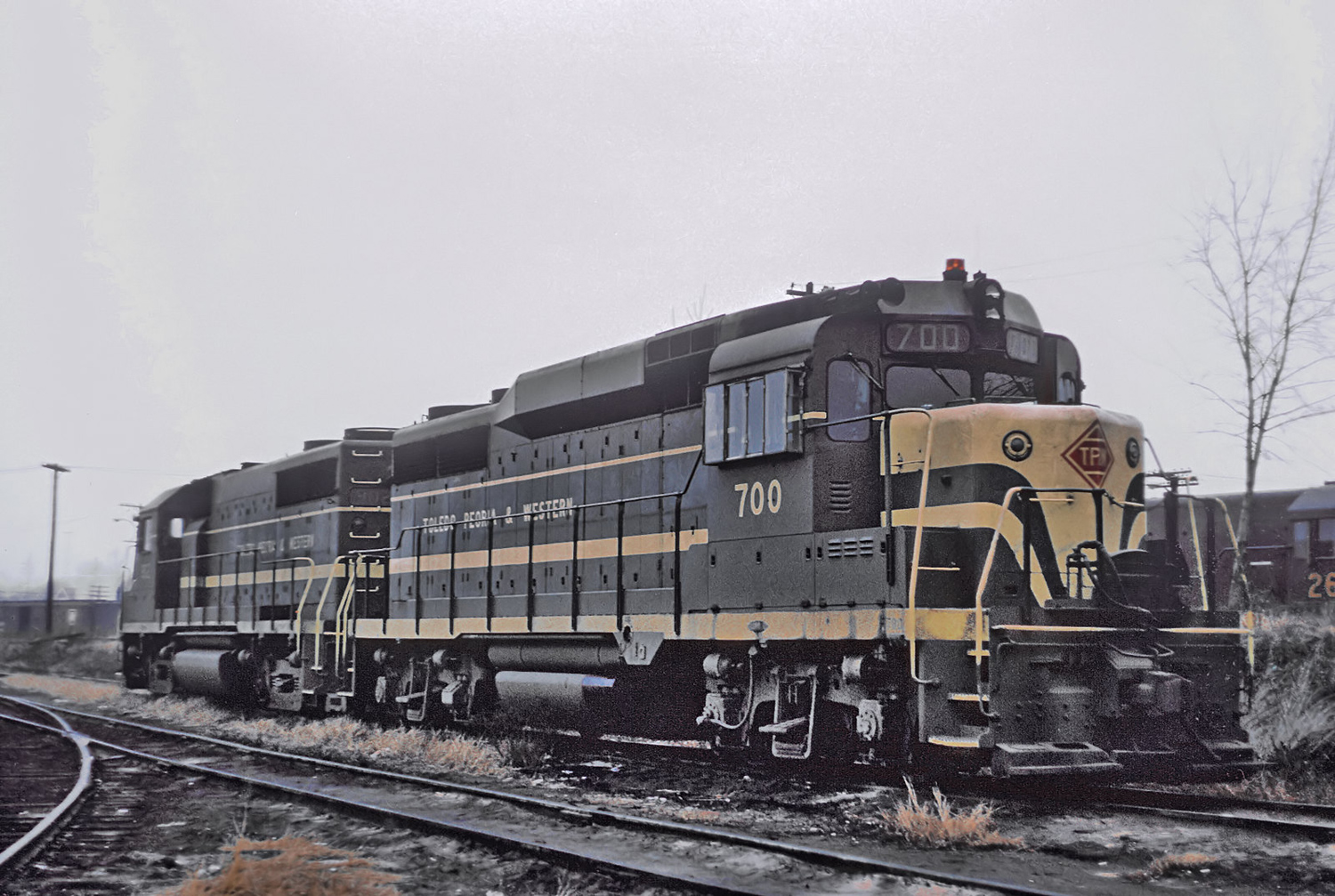
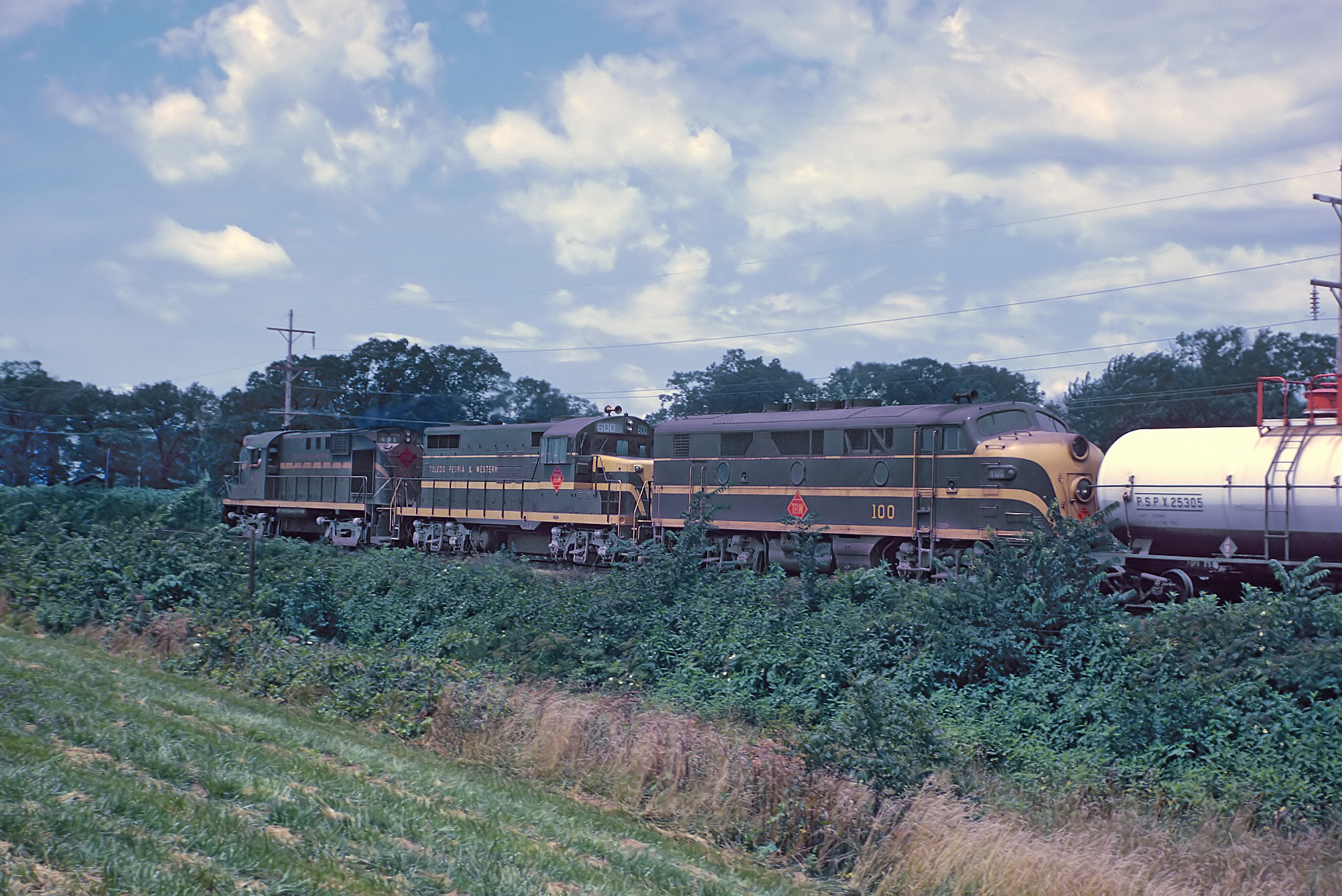


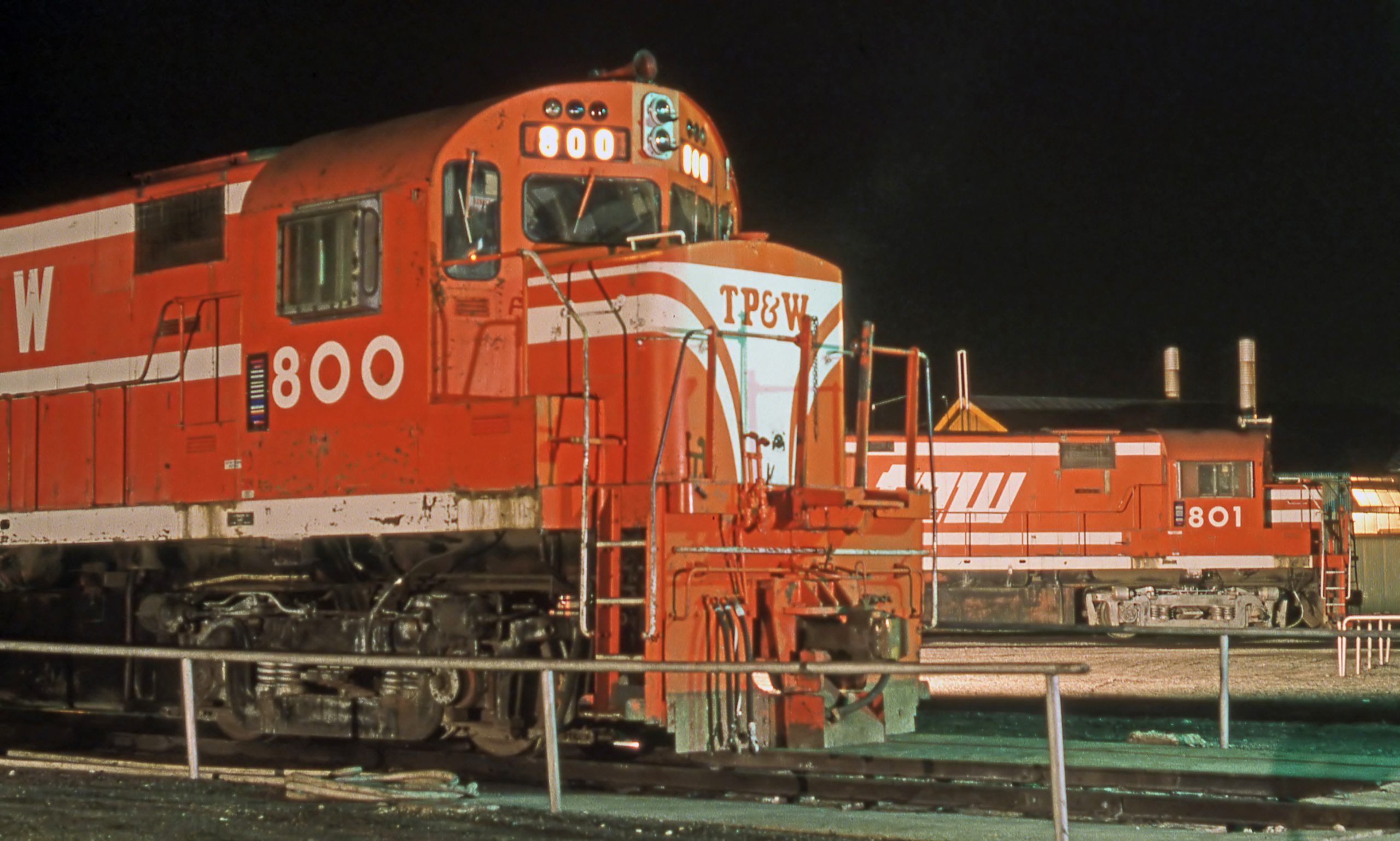
In reply to NickD :
I never realized they had such a storied history. I was pretty sure I remembered seeing high hood GPs, but second guessed myself lol.
One of the TP&W's pocket Northerns crosses the Illinois River at Peoria in '37. This bridge was hit by a barge in February of '70, which knocked part of the span into the river. The remainder was dismantled in the late '70s

TP&W's sole GP30, #700, on the bridge at Peoria in '68. Interesting to see that the telltales are still hanging over the line at this late of a date. You can see the remains of the Illinois Traction electric interurban line bascule bridge in the background, which was taken down in '51. Also, the GP30 appears to be in black and white, unless the photo has badly discolored. So it was green and gold at some point, this black and weight scheme, then a bicentennial red/white/blue, and then the final red and white.

Okay, so it wasn't a discoloration, #700 definitely wore a black and white paint scheme at one. No clue if that was applied to any other engines or not.

Also, in a bicentennial scheme

So, Northern Pacific was the first US railroad to purchase 4-8-4s, hence the name Northern.
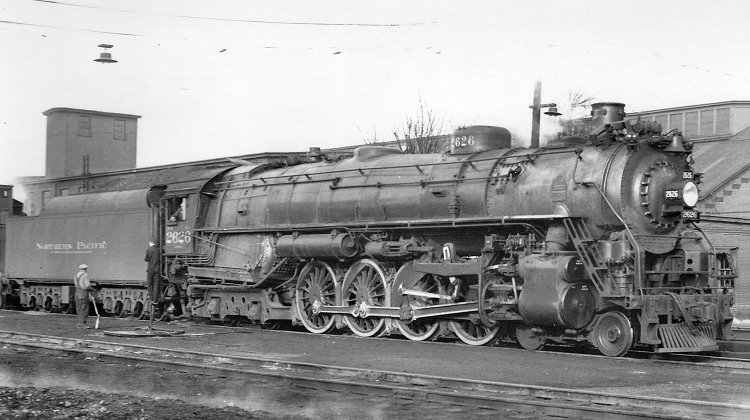
The Toledo, Peoria & Western had the lightest Northerns, with their H-10 class.
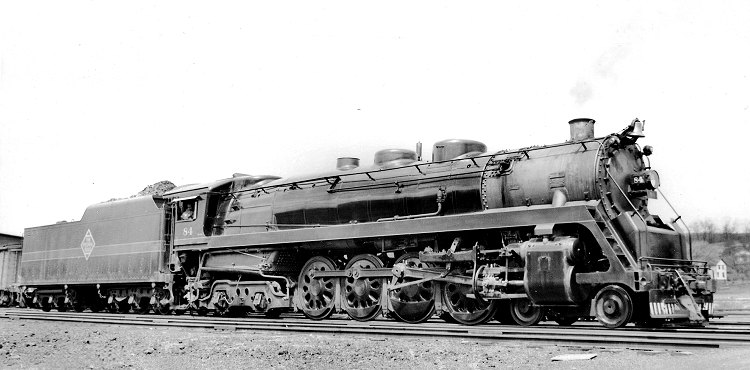
Atchison, Topeka & Santa Fe had the biggest and heaviest, with their excellent 2900 class Northerns. They tipped the scales at almost 1 million pounds, and were 108 feet in total length, thanks to those massive long-haul tenders. With 300psi boiler pressures and 80" drivers, they generated the most tractive effort, at 79,968lbs, and they were built for sprinting across the Southwest with passengers and timed freight.
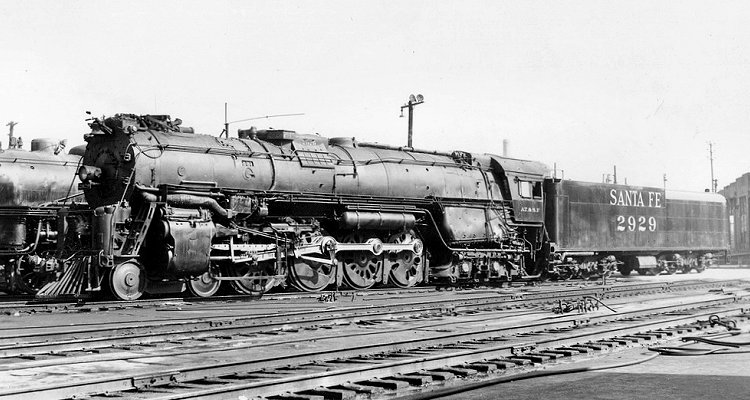
The best Northern is a toss-up between the Norfolk & Western J and the New York Central S-1a Niagara. The N&W J was a much better all-arounder. It was capable of speeding along with a passenger train (PRR saw 110mph on #610 when they tested it, despite 70" drivers), but could just as easily climb grades or dig in on a freight train. Smaller and lighter than a Santa Fe 2900, it was only 2000lbs shy of matching it in tractive effort, but because of it's shorter drivers, it developed that power at a more usable speed. The New York Central Niagara generated a stunning 6000 rated horespower in a relatively compact package, required by the NYC's tighter clearances, and was a serious speed demon thanks to its 79" drivers, while being incredibly efficient. Upon entering service, the Central had them running 6 days a week and racking up 26,000 miles a month, and whatever they hooked them to was going to cover some distance at serious speed. I would ultimately say the N&W engine was the better of the two, because it was a do anything anywhere type of engine. The Niagaras, while impressive, were suited more towards light freight and passenger service, and designed around the New York Central's very flat topography. A J on the Central would have done the job, but a Niagara on the N&W probably would have not.
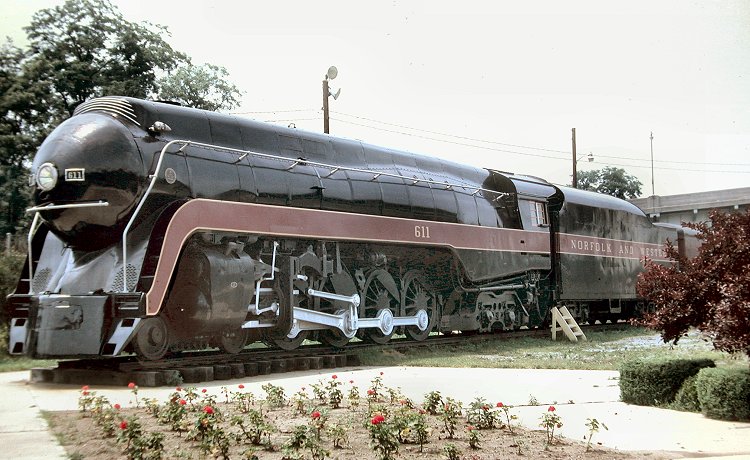
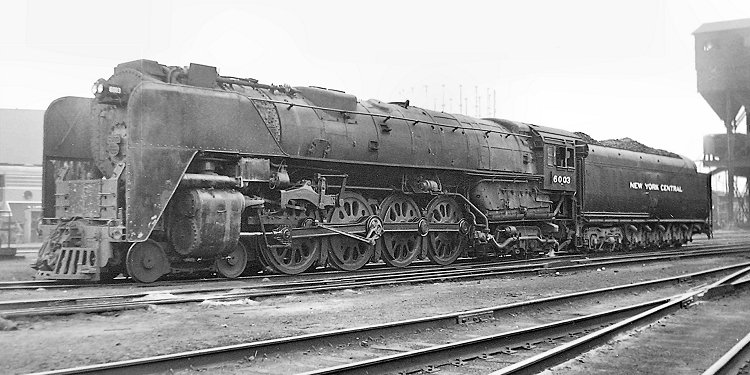
So, who had the least (of railroads that actually operated them, otherwise you'd have a bunch of ties with zero) and who had the most? Well, for least, Spokane, Portland & Seattle had a whopping 3 Northerns, class E-1, but I would put an asterisk next to that one. Why? The SP&S was jointly owned by Great Northern and Northern Pacific and used hand-me-down power from both lines. On the rare occasion the SP&S received brand new engines, they were simply a tacked-on part of an order by the parent company, in this case, a Northern Pacific A-3 Northern. So I would group those in with the Northern Pacific's 48. So, next up on the list is the Minneapolis, Saint Paul & Sault Sainte Marie, better known as the Soo Line. They had four of the O-20 class Northerns. While neither particularly large or notably powerful, they were still the largest engines on the Soo and had to be restricted to the Twin Cities-Chicago line because they would not fit the turntables anywhere else on the line.

So, who had the most 4-8-4s in the USA? Perhaps the Union Pacific with their famous FEF-1/2/3s? Nope, they only had 45, beaten out even by the DL&W's "Poconos" (55) and Lehigh Valley's "Wyomings" (47). What about the ATSF, with 65 engines split between two batches each of 2900s and 3700s? Close but no cigar. Surprisingly, the most Northerns in the US belonged to the Chicago, Rock Island & Pacific, with 85 split between 5 classes. While the Rock Island had the most, they also seemed to be one of the least photographed, and none survive today. If you go outside the US, the Rock still places third, beaten by Canadian National (105) and a Russian line with 140. Funny enough, Canada also beats out the US for the least, with Canadian Pacific operating a whopping two.

You guys familiar with Metal Earth kits? I've built the Wright brothers plane and a B-52. Below the freight train model, assembled engine only is 4 X 1 inch.
They're only ~$10 and come as a 3X5" envelope. I give them as stocking stuffers.
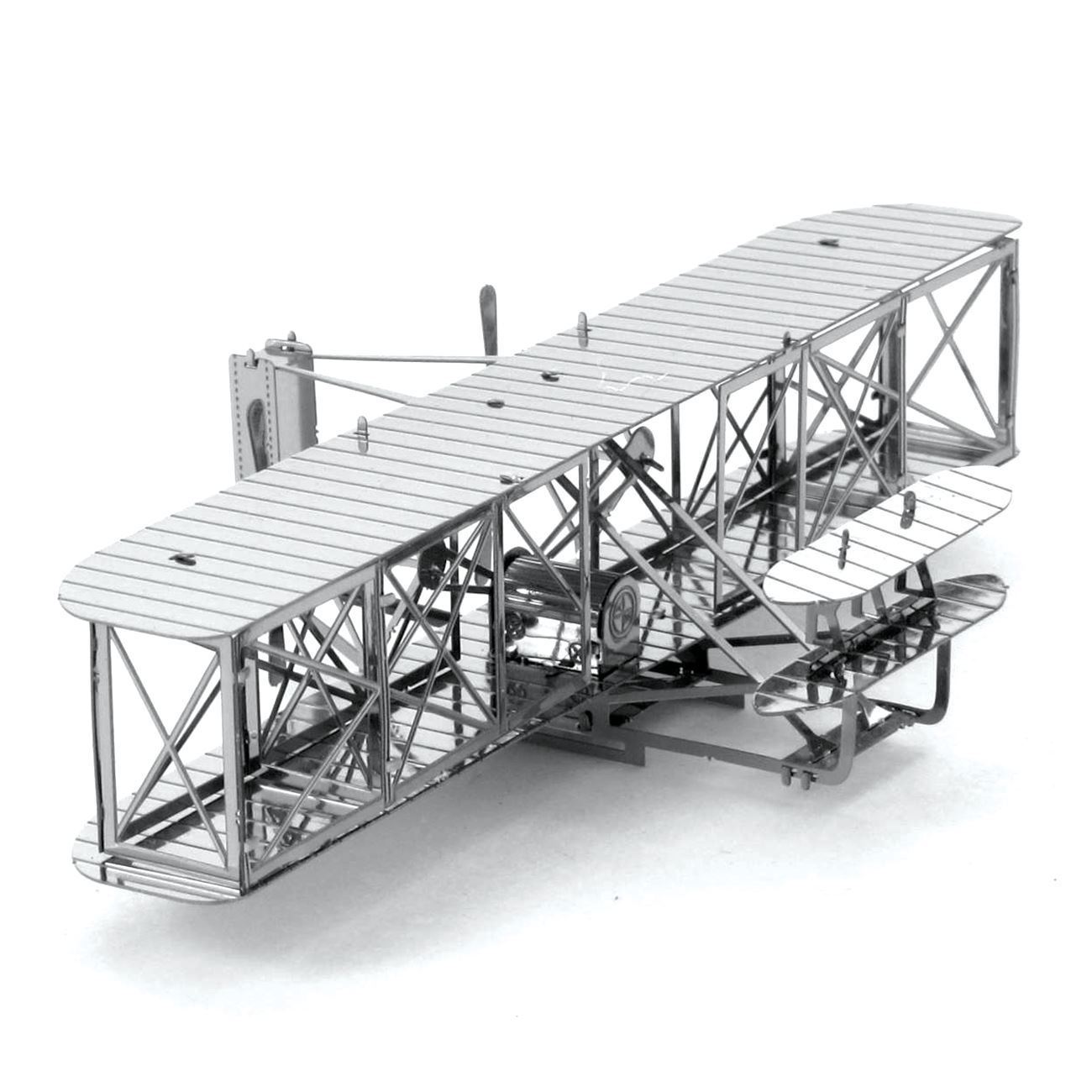
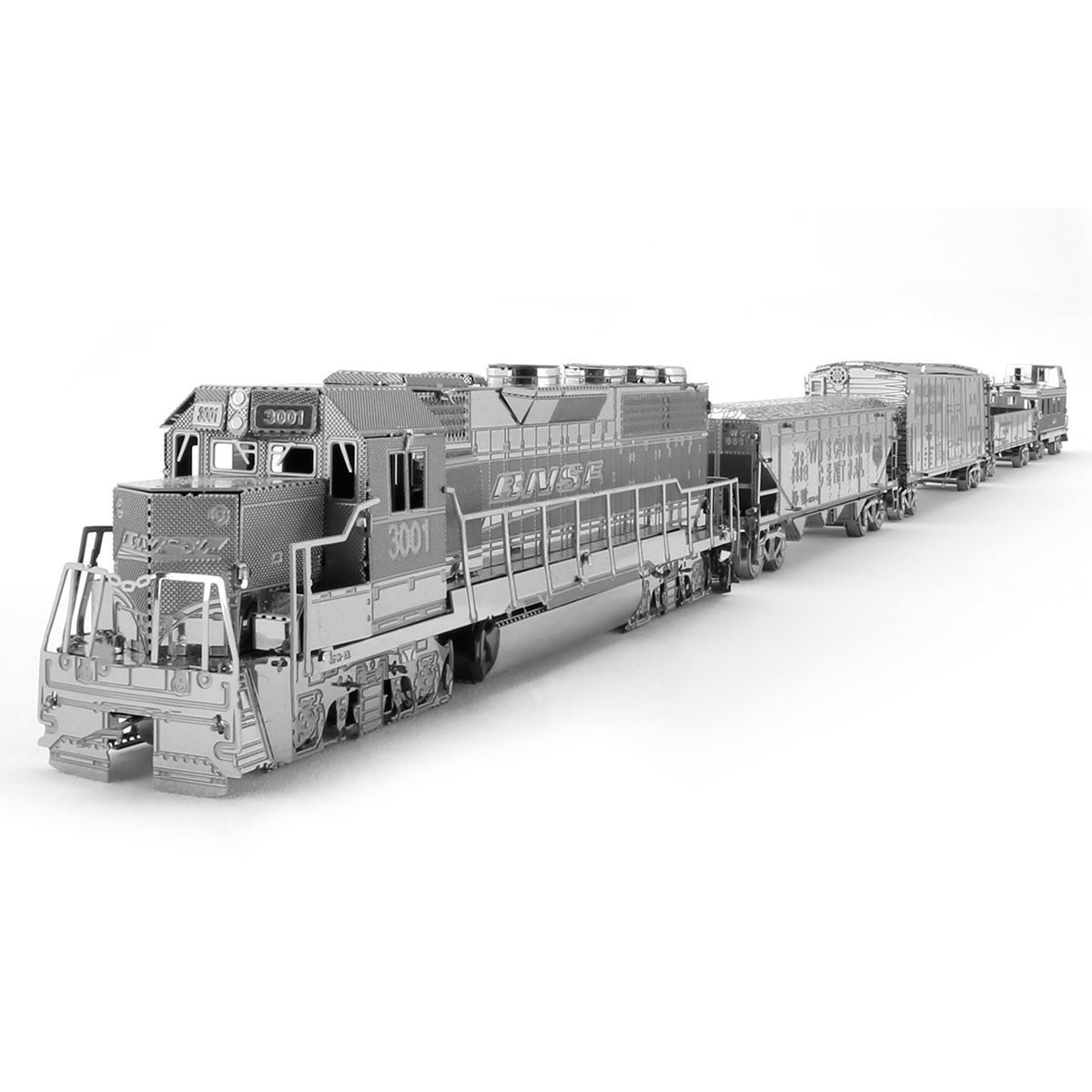
914Driver said:
I recently learned that the M-10000 had a spark-ignition petroleum distillate engine. I had always assumed it had a Winton 201-A diesel, like all these other early streamliner trainsets. But at the time of the M-10000's introduction, the diesel was still viewed as a kind of novelty and people weren't certain about its reliabilty, so they used a Winton 198-A, which burned petroleum distillate.
One of Conrail's four GE U36Bs, looking a bit worse for the wear, leads the charge at Becket, Massachusettes
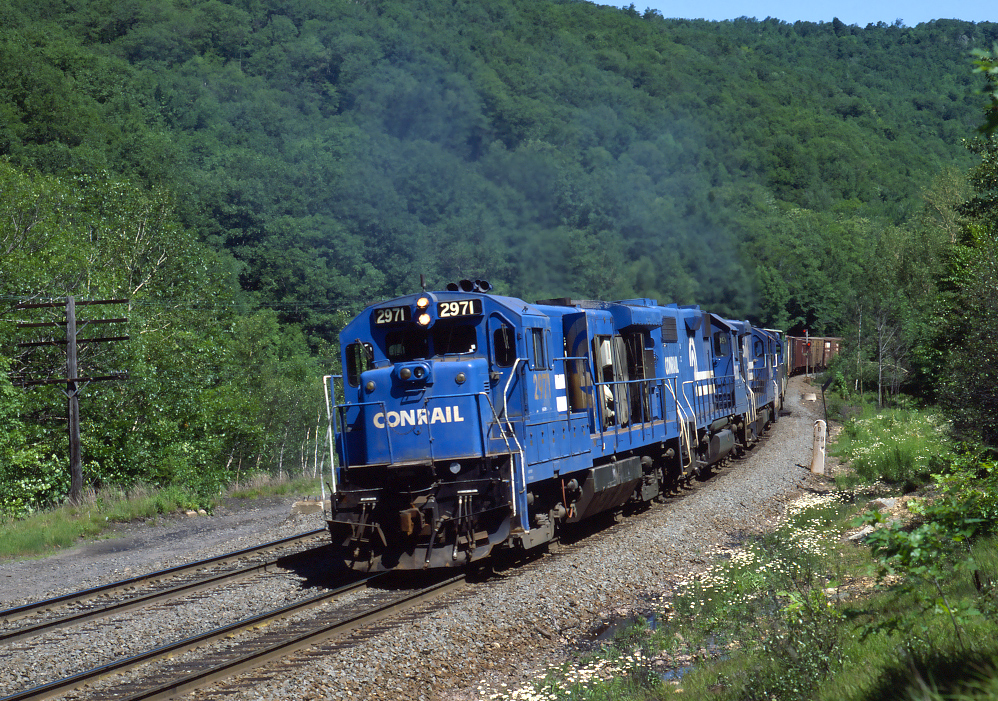
A Kansas City Southern hit a stuck semi today in Houston. That looks like some sort of Ferrari in the photo that shows the big tear in the truck.







Edit: According to Car & Driver "The full contents of the truck are not known, but photos from the aftermath show a dark-colored SF90 Stradale, a yellow 488 Spyder, and a white vintage Porsche 911 among the cars involved. The Porsche and the 488 appeared relatively unharmed, but apparently, the SF90 Stradale wasn't so lucky." There is also mention of some sort of Bentley that was also badly damaged with the SF90

Stumbled across this gem in The Final Years - New York, Ontario & Western Railway by Carstens Publications. When the ICC finally mandated that stokers be equipped on engines with more than 90 tons of weight on the driver's, the NYO&W didn't want to spend the money on retrofitting stokers to their W-2 "Long Johns", so they played with moving parts around and the spring rigging in the railroad equivalent of weight jacking to get the weight on the drivers down. This didn't improve the performance of the engines (they frequently derailed when backing up with any load hooked to them) and likely didn't win the hearts of firemen either.
On the subject of weight on drive wheels, the Brotherhood of Locomotive Engineers negotiated that an engine crew's pay rate was determined by the amount of weight carried by an engine's drive wheels. So, when the first of a class was built, they would be weighed. The builders had scale houses with one of a beam scales for every wheel on the locomotive. They would be spaced to match the spacing of the wheels on a given locomotive, and the locomotive rolled into the building to be weighed. There were standards as to how much water was to be in the boiler, how much sand in the dome, and sand bags filling in for the crew would be placed on the cab seats. If it was raining, the test would be rescheduled because the weight of the raindrops clinging to the locomotive could add over 100 pounds to its weight. It was all a very serious business, because axle loadings determined crew pays, how heavy a rail was needed, what bridges and turntables could support them, etc. Sometimes a single locomotive would be weighed, and that weight applied across the entire class, or sometimes they would weigh the first couple and average the amount.
This procedure, and its implications, came back to bite Lima when the Virginian ordered their 2-6-6-6s "Blue Ridges", which were an exact duplicate of a C&O H-8 "Allegheny". When C&O had purchased their engines from Lima, the engine weight initially advertised was 724,500 pounds. Four years later, Virginian ordered their batch and they needed to be transited over the C&O to the Virginian. Lima had to provide all the information on these engines to C&O to make sure there wouldn't be issues, and Lima said that the engine weight was 771,300 pounds. C&O gets all freaked out and isn't sure that their bridges can support the Virginian engines, and finally figures out that something is amiss. They sent one of there H-8s to Lima and had them run it across the scales, and surprise, it also had an engine weight of over 771,000lbs. C&O had been running the engines for four years with them drastically heavier than they had realized. Lima ended up settling with the C&O for a pretty good amount (something like $3,000,000 in 1945 dollars) and a bunch of C&O crews likely got some substantial backpay.
There were actually a series of locomotive weight cases taken to the National Board of Adjustment during the 1930s and 1940s. It turns out that many railroads were understating their locomotive weights, which shortchanged the wages paid to operating employees. Some of that may have been on accident, where a railroad rebuilt an engine with improvements and then never ran them back across the scales afterwards to see if that new frame and those cross-compound air pumps and Coffin feedwater heater added any weight, but some of it was likely to save a couple pennies here and there.
You'll need to log in to post.